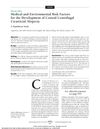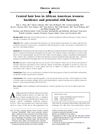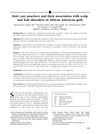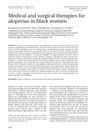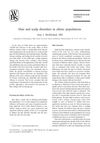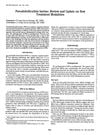Ethnic Hair Disorders: Diagnosis and Management
January 2015
in “
Current problems in dermatology
”
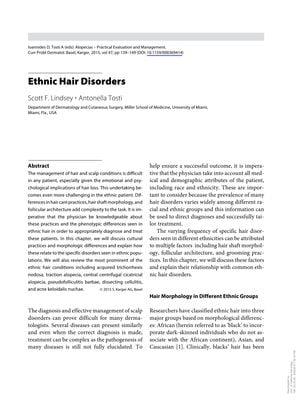
TLDR Understanding and treating hair disorders in different ethnic groups requires knowledge of specific hair care practices and hair characteristics.
The document from 2015 examines the diagnosis and management of hair and scalp conditions in ethnic patients, highlighting the need for an understanding of cultural hair care practices and the unique hair characteristics of different racial and ethnic groups. It categorizes ethnic hair into African, Asian, and Caucasian, with African hair being curlier and more brittle. The paper discusses the prevalence of hair disorders like traction alopecia (TA) and acquired trichorrhexis nodosa (TN) in black populations due to certain hair care practices. It also covers the chemical composition of hair, the use of chemical relaxers, and the importance of reducing hair trauma in treatment. The document reports a 28% prevalence of Central Centrifugal Cicatricial Alopecia (CCCA) in a study of 326 black women and notes the high incidence of conditions like pseudofolliculitis barbae and Acne Keloidalis Nuchae (AKN) in black men. It emphasizes the emotional impact of hair loss and the necessity for physicians to be knowledgeable about ethnic hair to effectively treat these disorders. Early intervention in conditions like TA can lead to complete regrowth, but long-standing cases may result in permanent loss.


